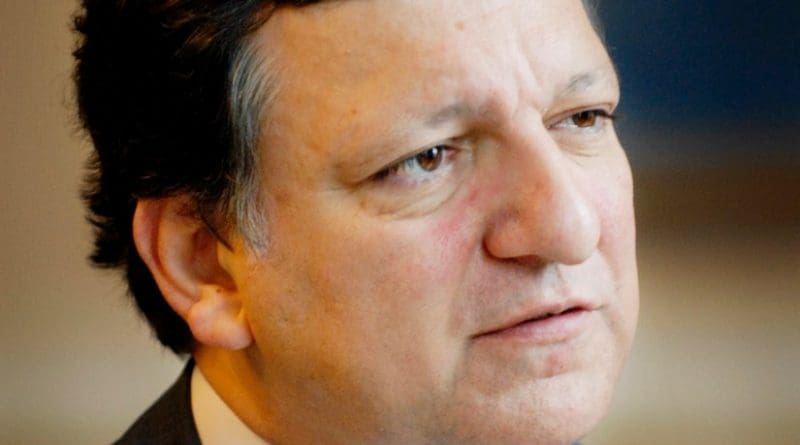Barroso Unveils ‘Connecting Europe’ Infrastructure Plan
By EurActiv
Aiming to re-launch growth and job creation, European Commission President José Manuel Barroso unveiled yesterday (19 October) a proposal to raise €50 billion for projects in the transport, energy and telecoms sector, using so-called “project bonds”.
The plan, called ‘Connecting Europe’, would fund €50 billion worth of investment from the EU’s 2014-2020 budget to improve Europe’s transport, energy and digital networks, Barroso said.
“Today we are making a down payment for Europe’s future growth and jobs,” he said.
The EU must help to build the roads, railways, energy grids, pipelines, and broadband networks that are so important to Europe’s citizens and businesses, the Commission explained.
Under the plan, which still needs approval from EU member states and the European Parliament, €31.7 billion will be invested to upgrade Europe’s transport infrastructure, €9.1 billion in trans-European infrastructure to meet the ‘Europe 2020’ energy and climate objectives and €9.2 billion in support investment in fast broadband networks and pan-European digital services, he said.
Barroso explained that from 2014, under the new EU financing framework, a ‘Project Bond’ initiative would be incorporated into the ‘Connecting Europe’ project.
Even though the next EU budget for 2014-2020 has still to be approved by the European Parliament and EU member states, Barroso said the Commission would already put in place a “pilot phase”, using up to €230 million from the present budget to help raise up to €4.5 billion from the private sector.
Recycling old ideas?
Asked by EurActiv why it took so long to define a clear blueprint for the project bond initiative since it was first announced a year ago (see background), Barroso said the initiative was actually accelerated, as it had been initially designed to become operational after 2014.
Barroso rejected suggestions that the EU was recycling old proposals after he was asked whether ‘Connecting Europe’ was in fact a remake of the so-called ‘Barroso package’, presented at the end of his first term, when the EU allocated €5 billion of unspent EU money for clean energy, gas interconnectors and broadband.
He insisted the €5 billion package was “a huge success, now we are building on that success.”
Project bonds will form a new category of securities in the capital market, said Economic and Monetary Affairs Commissioner Olli Rehn, who spoke alongside Barroso. He admitted that the Commission had to build the instrument “gradually, with a phase-in period”.
Risk sharing
“What do we mean by project bonds? Imagine an infrastructure project with revenue potential, for instance, a road toll. It is often difficult for project companies to attract sufficient financing because of the risks associated with the long-term nature of such projects. With a certain amount from the EU budget, which is pre-specified, we can help private companies to attract third party funding from the capital market,” Rehn went on.
Not all infrastructure projects were suitable to be funded through project bonds, Rehn said. The techniques to be employed with the European Investment Bank have already been tested in some current instruments such as bank loans guarantees.
Now the same technique would be expanded to capital markets, to pension funds or insurance companies, who want to invest long-term, but cannot take too much risk, Rehn explained.
The European Investment Bank will be our risk-sharing partner, he said.
Rehn concluded by saying that the Commission was inviting the European Council and the Parliament to consider project bonds “a matter of priority” and adopt the pilot phase “promptly and as soon as possible”.

